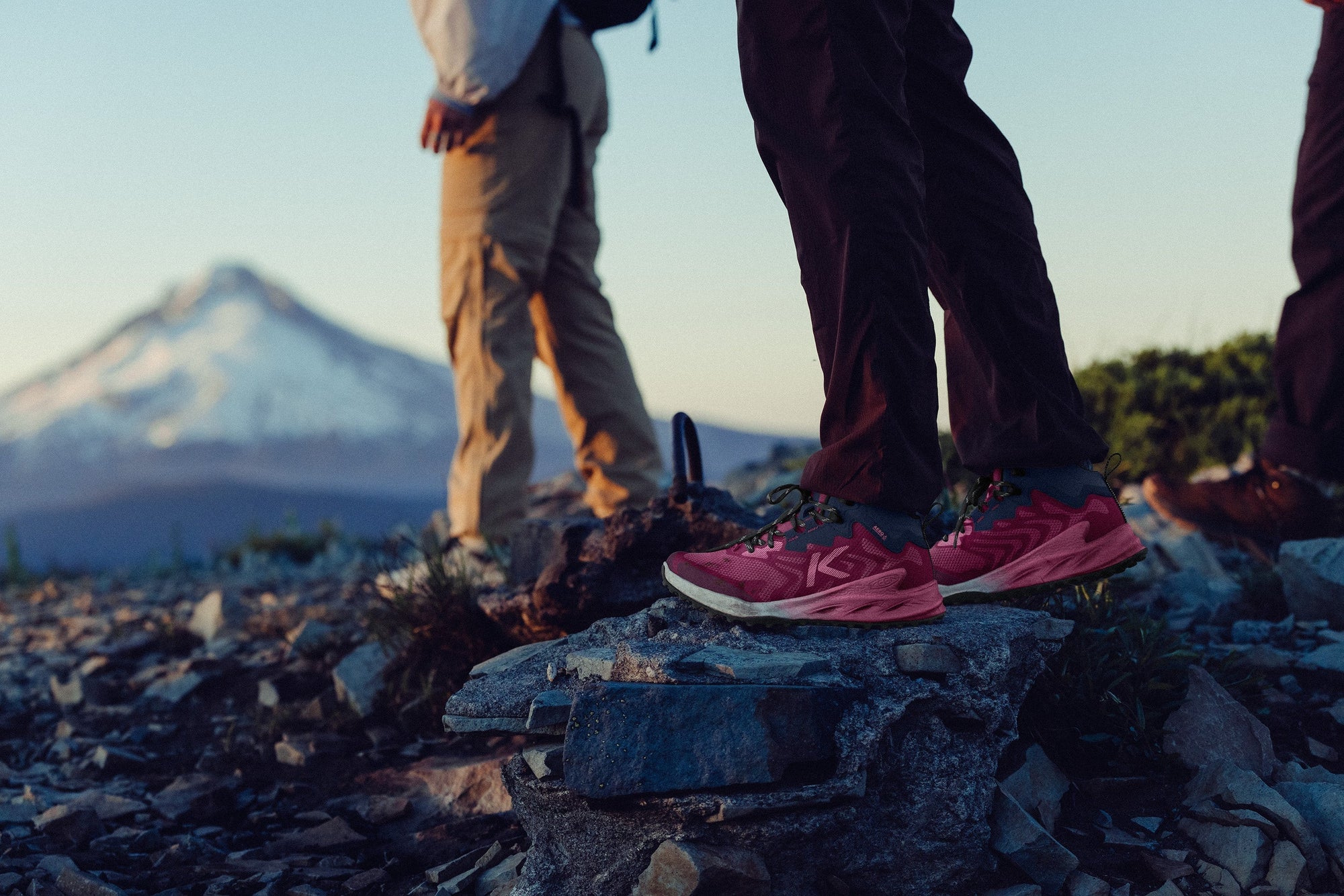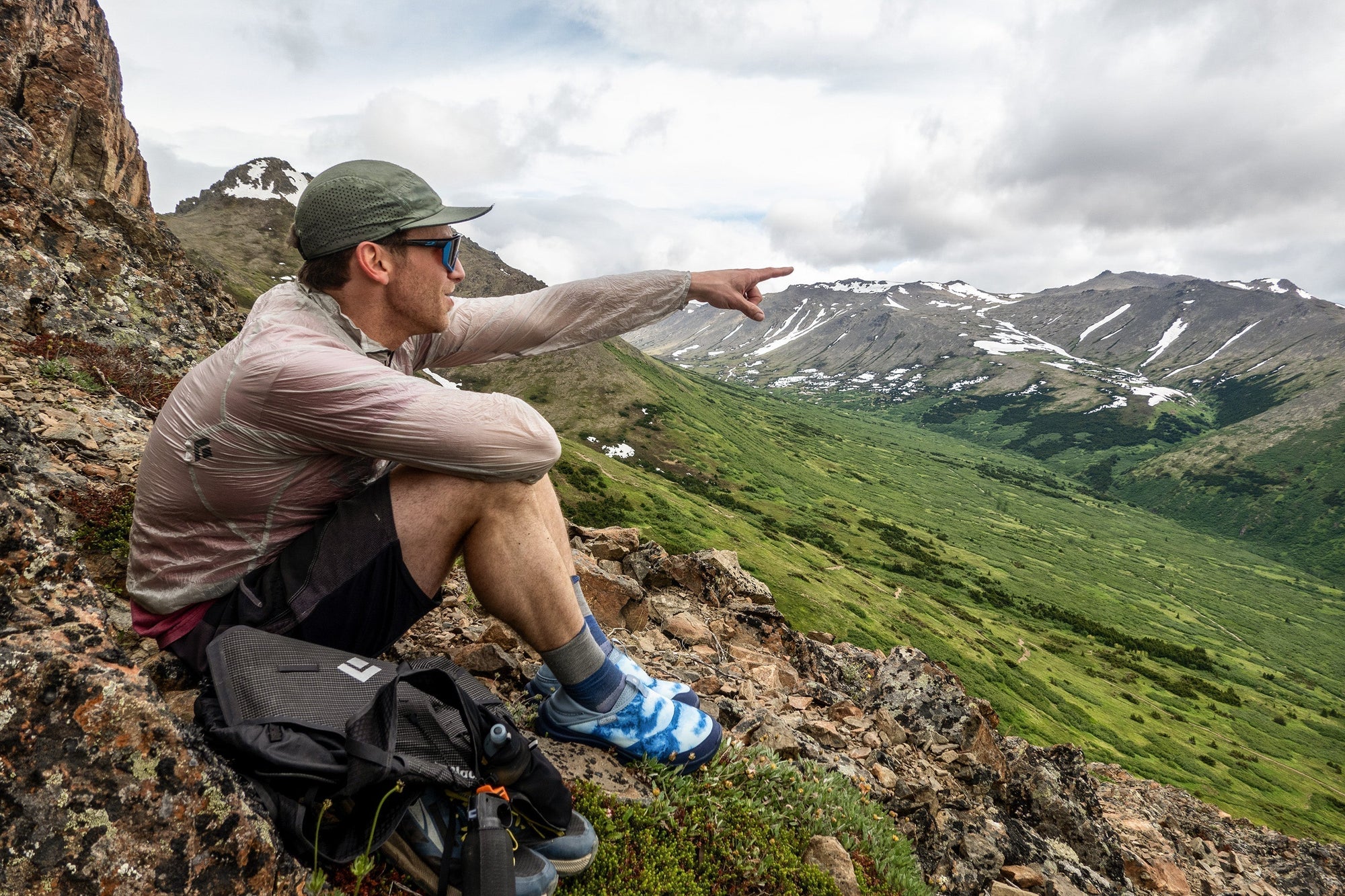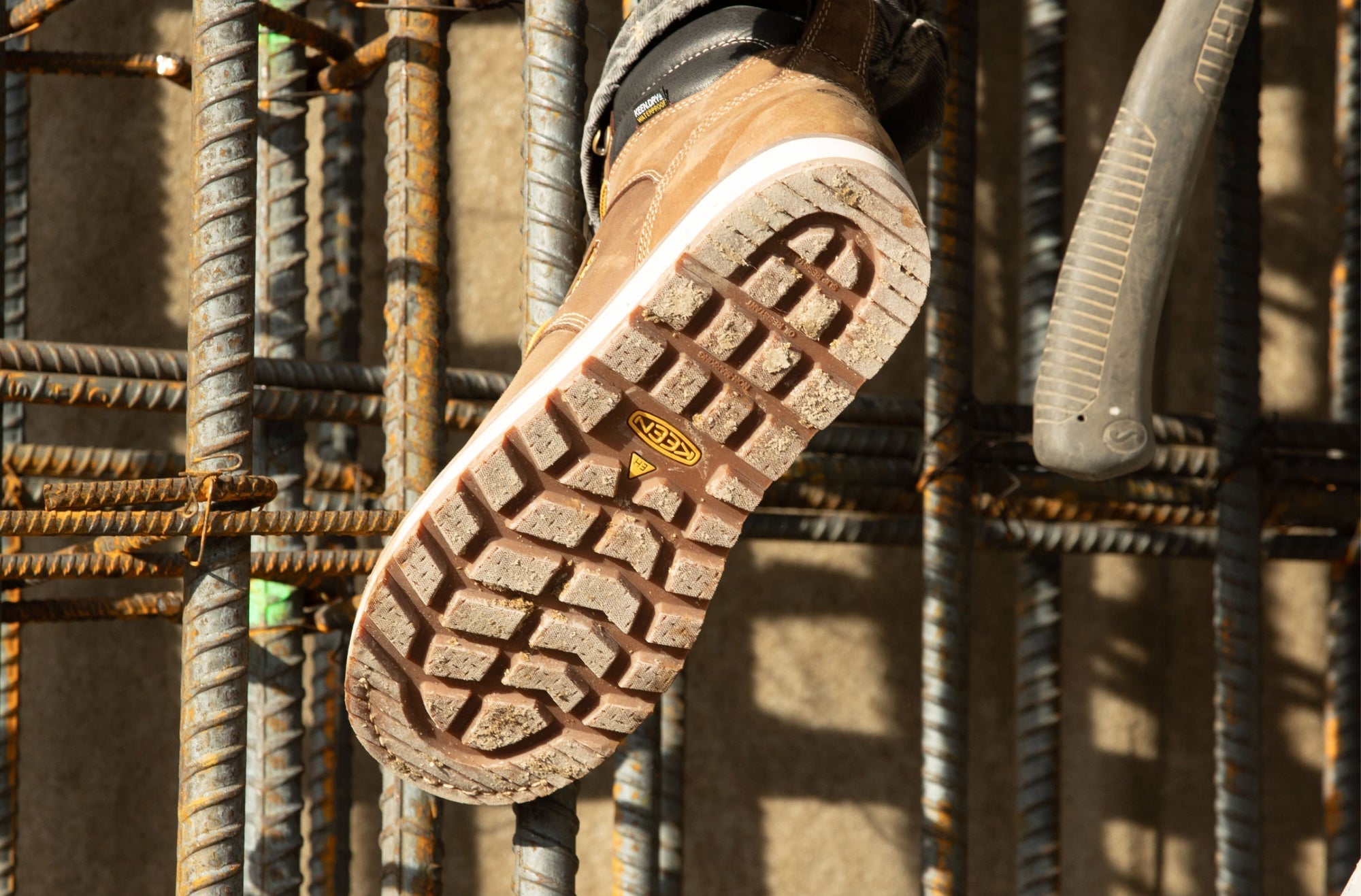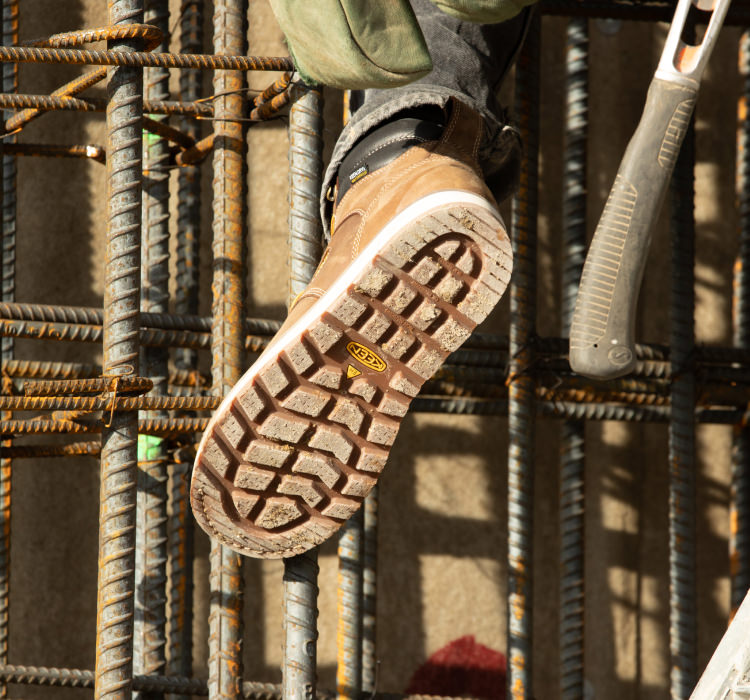Less crowded trails, fewer bugs, and getting to see spectacular sites shrouded in snow or glistening with icicles — yup, winter hiking is one of the best-kept trail secrets around.
Sure, it has its fair share of challenges and hazards. And, yes, it takes a bit more prep time to get to the trailhead. But once you're there, bundled up in that just-right mix of layers and waterproofness, hiking in winter is exhilarating and full of reward.
You'll often find us exploring the snowy trails of the Cascades on the weekends (so much more magical than Portland rain). If you've never seen your favorite trail transformed into a winter wonderland, here are our top 10 tips for taking your hike into the land of alpenglow and frosty terrain.
1. Keep Your Feet Happy
When shopping for winter hiking boots, we recommend looking for a waterproof pair with good traction and cozy insulation. In winter, hiking conditions can often be icy, slippery, (and downright harsh) so having a pair of boots with a grippy sole designed for winter conditions is a must. Wet weather, slushy trails, and the occasional detour around a snowdrift could be a big deal, but if you’re wearing waterproof, insulated boots, your feet will stay warm and happy through every winter challenge.
KEEN tip: Lots of snow on the trail? Bring along a pair of snowshoes to make the miles easier. Many outdoor stores offer rentals—just keep in mind that not all boots are snowshoe compatible. Our favorite boots for strapping on a pair of snowshoes are Revel IV boots for men and women.

2. Layer Up
Layering is important for hiking in winter. Sure, it may be frigid outside, but once you get going you’re gonna be so happy you layered. We like to think of dressing for winter hiking a little bit like the layers of a forest ecosystem:
Forest floor/base layers: In nature, the forest floor supports the ecosystem by creating and releasing nutrients. In layering, these are your base layers that keep your whole body toasty. Our favorite base layers are a pair of wool pants, wool or synthetic tee or tank, and a cozy pair of wool socks.
Herb & shrub layers — or your middle layers: Here is where you’ll want to throw on a pair of fleece pants or hiking pants (ones with wind protection are great) and a sweatshirt or a midweight long sleeve layer and fleece vest.
The understory/outer layer: The sheltering layer that protects the forest layers below represents your outer clothing layers. Think waterproof rain pants and an insulated rain jacket (or some people prefer an insulated jacket paired with a waterproof shell for even more layering options).
The canopy — or protective accessories: In the forest, the canopy is the first layer to meet sun and rain. Similarly, your hat or balaclava, gloves, and gaiters protect you from the elements and help keep you dry.
KEEN tip: Avoid cotton clothing since they tend to hold moisture, resulting in clammy and cold skin. We always recommend wool or synthetic options instead, so that you stay warm even if you end up getting a little wet (from rain or sweat—whatever).
3. Pick a Good Trail
Not all trails are primed for winter hiking. Consider picking a trail that’s relatively flat and not very exposed. If trail conditions become slippery or icy, not having to deal with climbing and descending tends to make for a more enjoyable hike. Picking a trail that isn’t cliff side is also generally safer if you do end up sliding around a bit. Not sure where to hike? Call the local ranger and ask the experts about trail conditions. (Or scope out some trails in spring, summer, and fall, and see how your favorite trail changes with the seasons.)

4. Always Have Safety in Mind
For anything longer and more remote than a couple of miles on an easily accessed trail, always (and we mean always) pack the 10 Essentials. In addition to these, throw in a couple of hand warming packets, an emergency blanket, trekking poles, and a packable snow shovel (those trailhead parking lots aren't always well plowed).
KEEN tip: Navigation is always an essential but in cold weather GPS devices and cell phones can malfunction. Be sure to bring along a paper map of your route and extra batteries.
5. Check the Weather and Start Early
Winter weather can be unpredictable and sometimes downright unsafe. Always check the weather and know when to call off a trip. (Storms or avalanche warnings are a no-go for us.) Since daylight hours are just plain shorter in winter, start hiking early so you’re done before dark. Make sure to pack for the worst weather conditions possible. If you end up needing it, you’ll be so happy you packed that rain jacket.
KEEN tip: Remember that hiking in winter can take longer than hiking in other seasons. If you and your hiking crew are the first to break trail or the conditions are challenging, hours could be added to the average hiking time.
6. Eat More
Physical activity mixed with cold weather (and carrying a bunch of gear too) is hard work for your body. You’re going to be burning a lot of calories so make sure you eat plenty the day before and bring lots of trail food. Snacks that you can eat while hiking are awesome so that you don’t have to stop for too long (and risk getting cold while you’re standing around).
7. Don’t Forget Sun Protection
Ever looked at pictures from Mt. Everest expeditions and wondered, “Why are those haggard humans wearing sunscreen and sunglasses . . . in the snow?” Well, UV rays are higher at higher altitudes. Plus, snow reflects the sun’s rays and makes exposed skin vulnerable to sunburn. So throw on some shades, layer on the sunscreen, and roll on some SPF lip balm too. Chapped lips? Not today.
8. Wear a Hydration Pack
Staying hydrated while hiking is a must. But sometimes conditions are so cold that exterior water bottles can start to freeze. A hydration pack limits freezing because water bladders are often on the back side of your pack (so your body temperature keeps water from freezing). Invest in an insulated sleeve for your drinking tube though. Since the tube is exposed to the elements it's vulnerable to freezing.
9. Know the Signs of Frostbite or Hypothermia
Although rare, winter hiking brings along the risk of frostbite or hypothermia. Frostbite appears most often on fingers, toes, the nose, and earlobes and manifests as numbness, lack of feeling, or skin that begins to appear waxy or discolored. Hypothermia—another cold-related emergency is the shutting down of the body’s warming system and shows itself through shivering, numbness, apathy, impaired judgment, and in severe cases—loss of consciousness. Read more about frostbite and hypothermia and how to treat them at the Redcross.org.
KEEN tip: If you are hiking with a canine companion, it’s important to know what frostbite and hypothermia look like on pups too.
10. Throw Yourself a Welcome Back Party
Getting back to the car after a winter hike is sort of like entering a warm cabin glowing with a crackling fire. It’s a place to heat up — a respite from the wind and cold. Pack a party bag complete with warm clothes, some ultra cozy shoes (the Howser slip-on is our favorite post-hike option), and a thermos full of hot coffee or cocoa for the full experience. After all, dreaming of that cocoa might be the thing that gets you through the last mile of the hike.
This winter, don’t let a little “bad” weather get in the way of enjoying the great outdoors. Winter hiking takes extra preparation and the right gear but once you’ve got those all set, you might end up enjoying it so much that you’ll find yourself divulging the winter hiking secret to everyone you meet.













